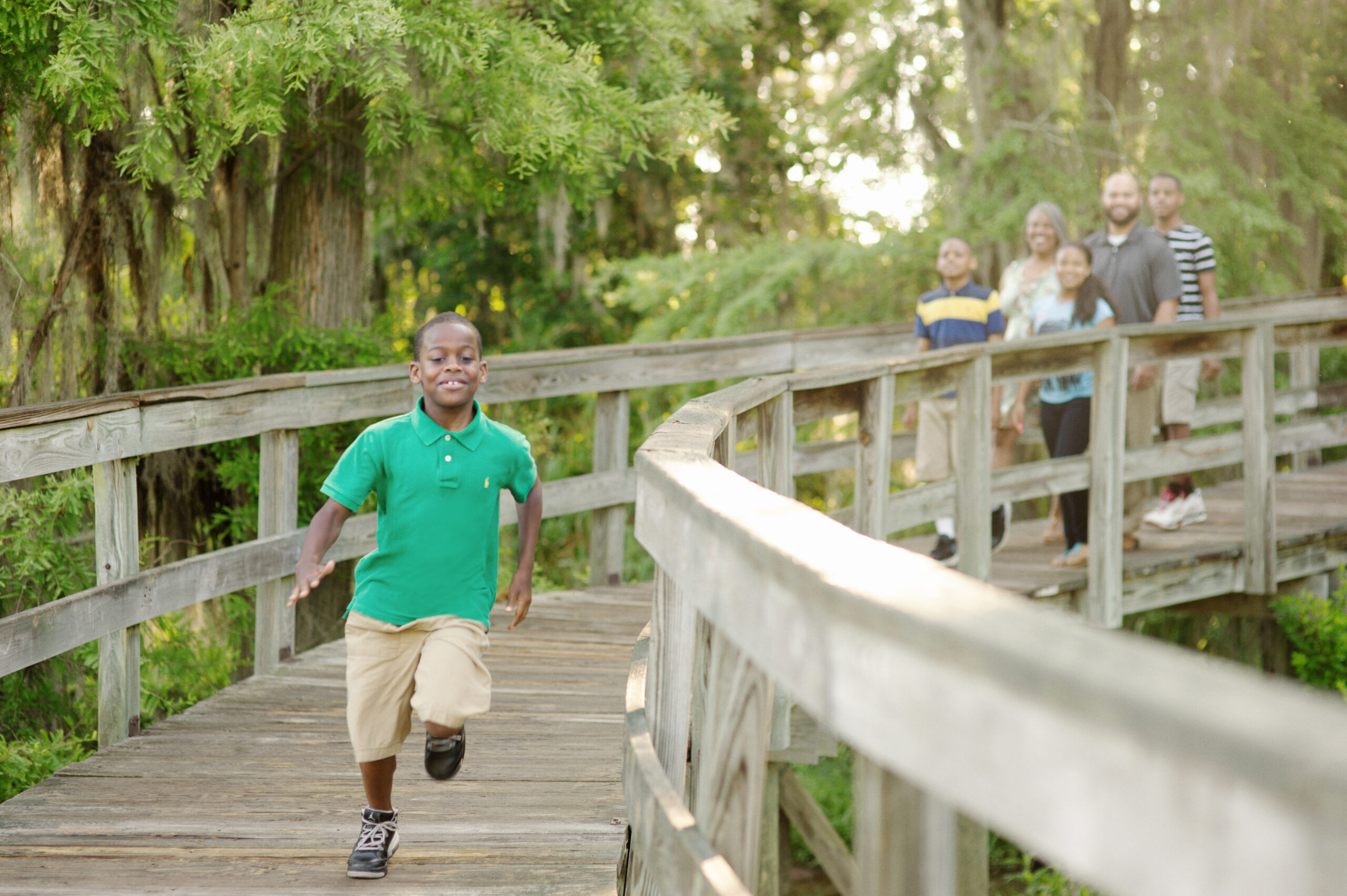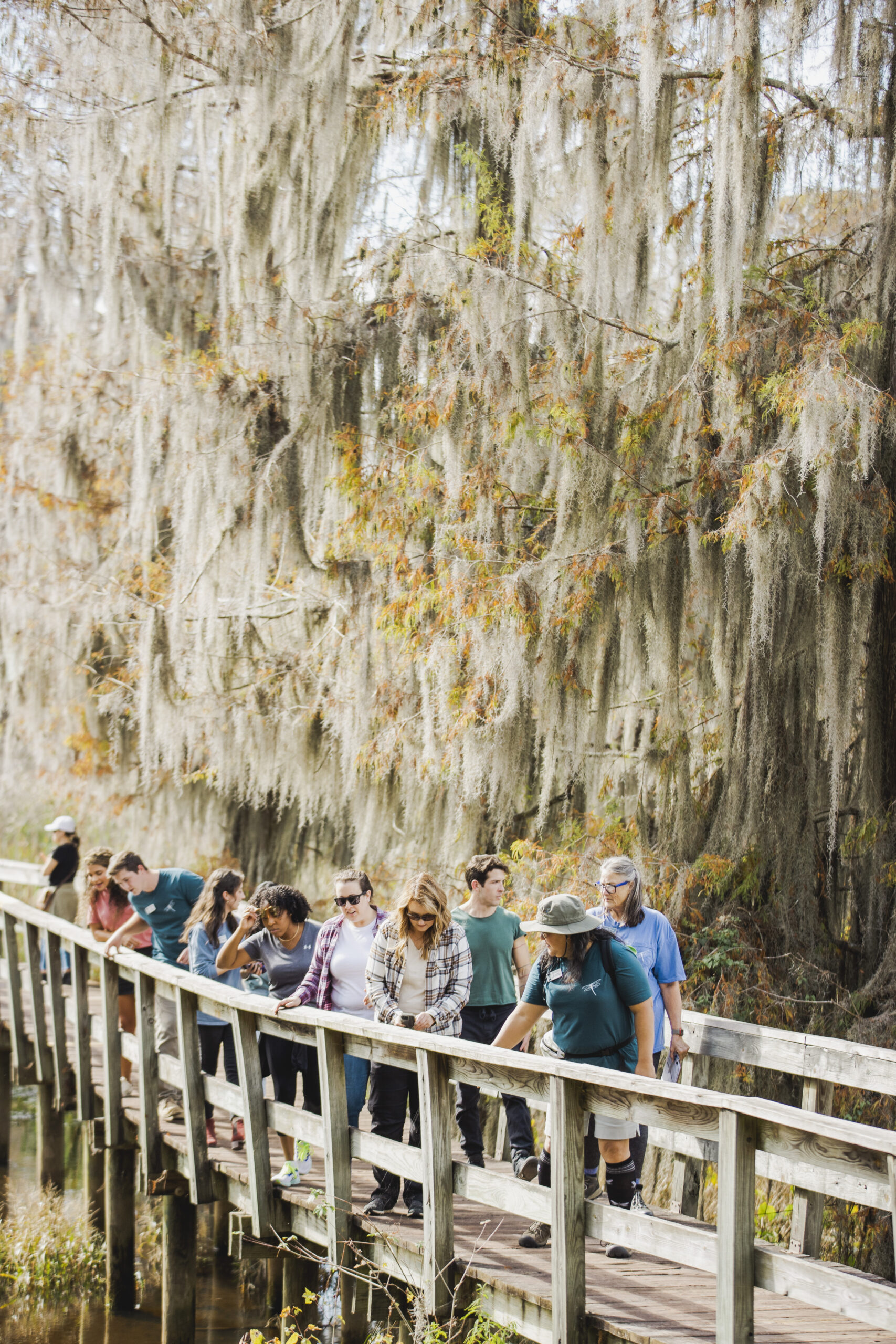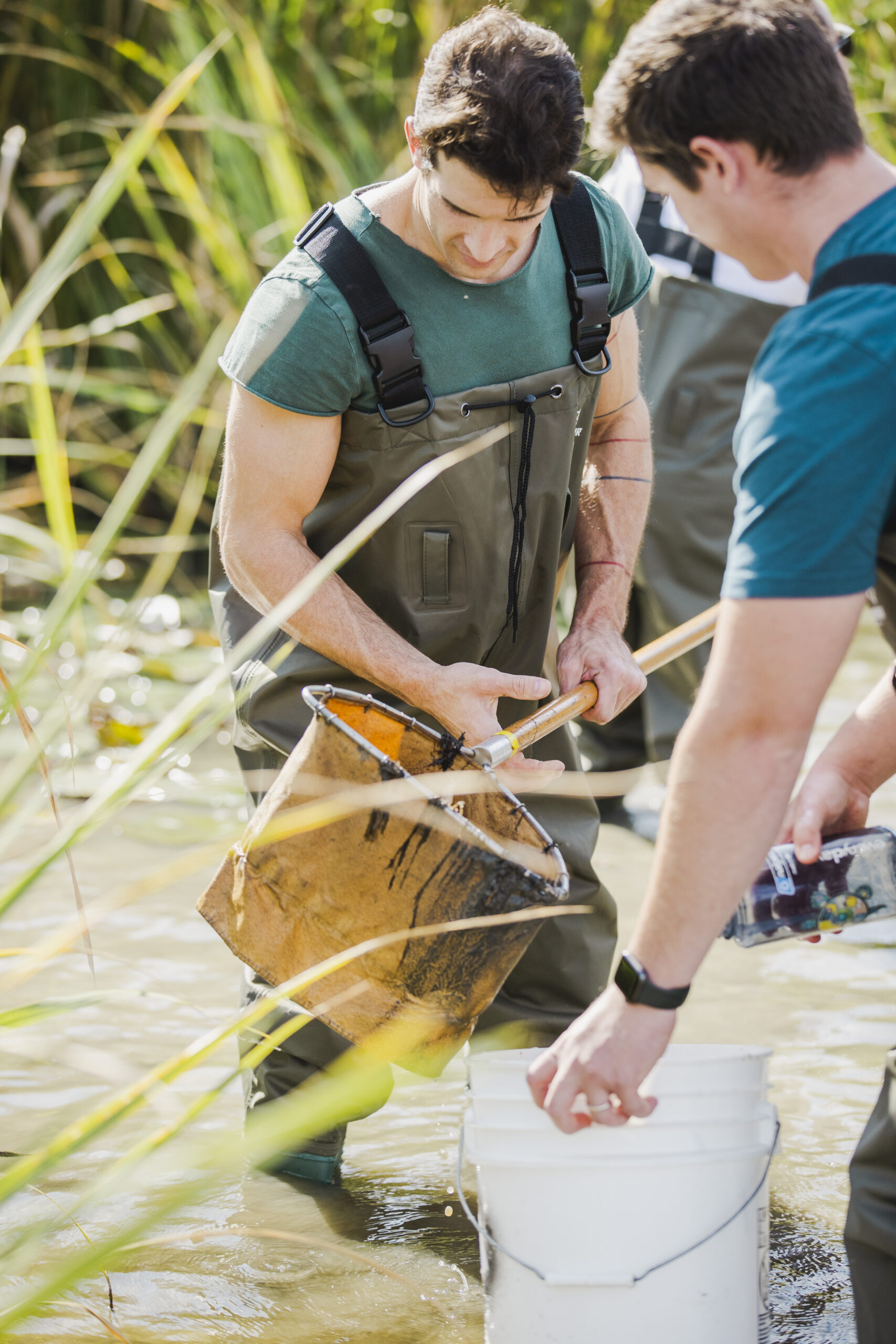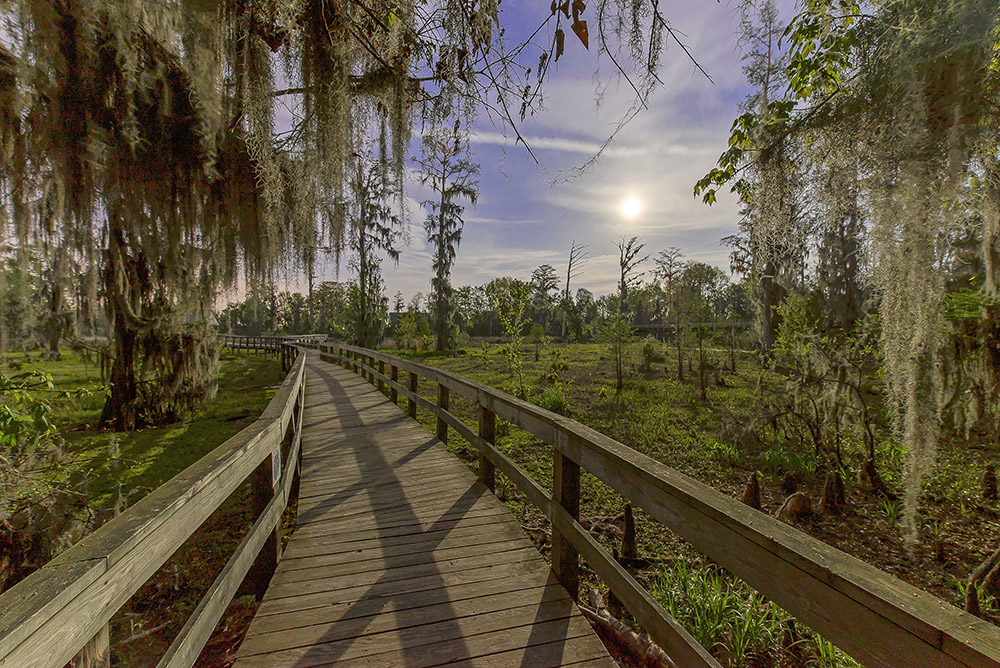The Wilder Side of Augusta
Words by Trudy Haywood Saunders
Photos by Destination Augusta Explore Georgia
“You know, back in the day, George Washington actually thought swamps were full of diseases,” Kim Dillard, Parks Director for Phinizy Center for Water Science says, as she leads a group on a nature hike through the swamp. But it’s the Augusta native’s mission to change people’s perception of the swamps, from an object of disgust, to a thing of beauty, and she encourages locals and visitors to share her passion. “I grew up in Augusta, and I didn’t even know we had a Phinizy Swamp here,” Dillard says. People know Augusta for perfectly manicured golf courses, like Augusta National, but a different kind of beauty lies just fifteen minutes from downtown.
Augusta’s relationship with the swamp is a bit complicated. Named for the Italian immigrant Phinizy family when Augusta was founded, Gracewood Mental Facility acquired the property, with patients growing their own food there in the 60s and 70s. The city later acquired the land and it became an illegal dumping zone, pouring raw sewage into the swamp until 1968. When Congress passed the Clean Water Act in 1972, the city decided that they needed to do something.
That’s where Dr. Eugene Eitzen came in. The founder of Phinizy Center for Water Science, Eitzen went to Florida and saw how Walt Disney World was using their wetlands, building a series of constructive wet cells. He adopted that idea and brought it to Augusta. “They actually showed that humans and nature could work together to get our local waterways nice and healthy from water that’s been treated,” Dillard says. Through mitigation with the Army Corps of Engineers, they decided to use some of the land, develop a park, and start offering field trips to students around the area to let them learn about wetland ecology.
Augusta had one of the first wastewater treatment plants, but they were still not hitting the mark. The city was getting fined hundreds of thousands of dollars a day for putting too much ammonia back into the river. So, in 1996, a group of volunteers led a massive cleanup of the swamp. They started offering field trips for school groups, kindergarten, and first grade in the beginning, but eventually middle and high schoolers.

When people call Dillard “the swamp lady,” she’s actually flattered. “I can’t express enough how important wetlands can be, not just for animals and plant life, but to us humans, too. So that’s important to me,” Dillard says.
It takes 10 full time, 10 part time, three research scientists, and 300 volunteers to keep everything running in the 1,100 acres that Phinizy manages of the entire 7,000 acres swamp.
“When you have big water systems, you’re going to find wetlands, and they help filter out the bad stuff before it goes back into the big water systems,” Dillard says. “And guess where we get our drinking water from?” That big water system, the Savannah River, sustains thousands of species and supports a lot of food crops, too.
“We have different kinds of animals that will bring people out because they love animals. If that’s the way I can connect people to nature, then so be it.”
I want us to be known in the Southeast as one of the top hands-on wetland ecology field trips, and our parks to continue to be open, free to the public.”
Last year, the swamp hit 100,000 student visitors since they started in 1996. They’re starting to come from beyond the Augusta area, as far away as Columbia, South Carolina, and all the way up to Atlanta.
Students come, learning about different themes, from birds to trees, to wildflowers, to wetland ecology. Adults come, too. Some come for private guided hikes, some are pet lovers who bring their dogs, and some are runners. The swamp has developed a program with the Augusta Visitors called EcoExplorers, basically an adult field trip. “We put them in waders,” Dillard says. “We put them in the swamp and they do exactly what the scientists do.”
American alligators are probably the animals most associated with swamps, and they can be found at Phinizy, along with other reptiles like turtles—snapping turtles, yellow belly sliders, mud and musk turtles, and box turtles. There are snakes, too—water moccasins, copperheads, rat snakes, racers, green tree snakes, and ribbon snakes. Then there are the mammals—bobcats, otters, coyotes, raccoons, possums, and marsh rabbits. But it’s the smallest critters that may be the best indicators of the swamp’s health. “The research scientists look at bugs, and certain species tell us that our water quality is good, or something’s going on. Bugs are pretty important to us around here,” Dillard says. Take the stonefly nymph. If you can find the larva stage of the stonefly, that means that the water is ideal. Recently, Jacob Lott, one of the research scientists, found one in Butler Creek, which is a watershed of the swamp. Lott is one of only three research scientists in the state certified to identify these bugs.


“The Audubon has deemed us an important bird area, too,” Dillard says. “That just shows full circle of where we used to be an illegal dumping zone.” The painted bunting is a big draw, with people coming from all over the East Coast to see them.
Phinizy has three research scientists on staff who are hired to do third party, unbiased work.
They have collected over 17 years of continuous data on the Savannah River, the most in the US. They monitor trends and use probes to collect data. The scientists got a grant to establish communities of water throughout the shoals of the river. So far, they’ve had a 50% success rate.
Of course, they’re still threats—industry, agriculture, and invasive species, like kudzu, but sustainability is key. “I think we’re in a good place,” Dillard says. “I want us to be known in the Southeast as one of the top hands-on wetland ecology field trips, and our parks to continue to be open, free to the public.”


